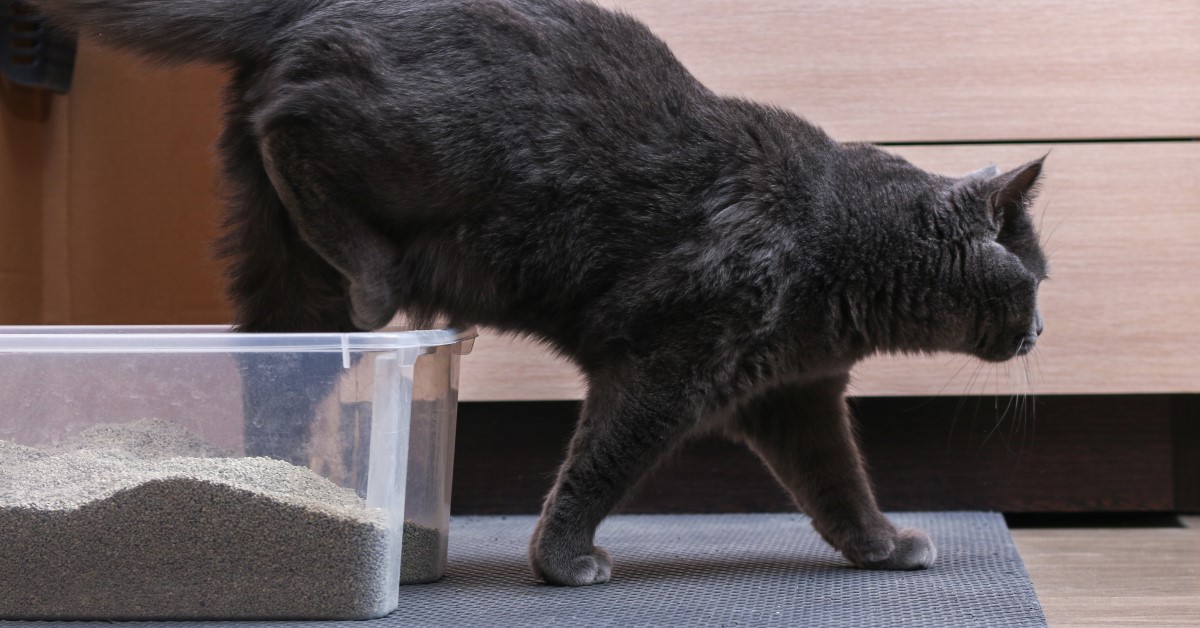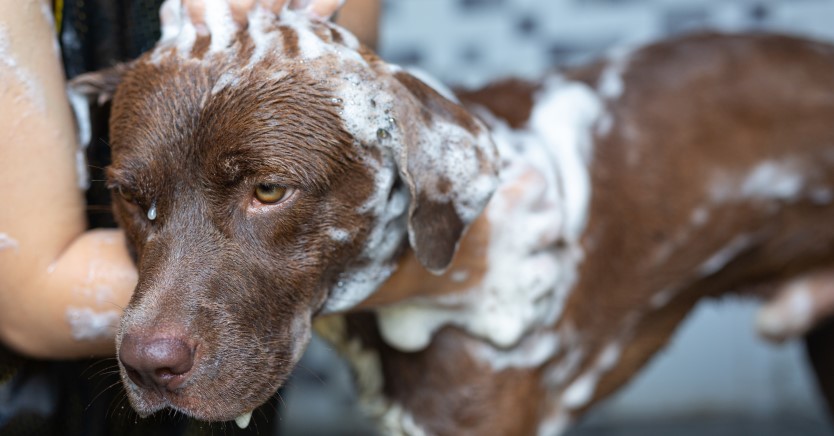Where Should I Put My Cat’s Litter Box?
Choosing the right place to put your cat’s litter box can have a big impact on her health and hygiene habits.

Cats have a complex relationship with their litter boxes. More than just a place to pee and poo, a litter box helps cats stay mentally and physically healthy. Cats are very clean animals and have a sense of smell that is 14 times stronger than ours. A dirty or inaccessible litter box could cause your cat to look in an alternate location to do his business. While there are many aspects of litter box etiquette, one of the most important deals with location.
Choosing a Litter Box: The Basics
Deciding where to put a litter box will depend on several factors, including the type of litter box. When choosing a litter box, it’s important to consider size and material. A litter box should be large enough for your cat to step inside, turn around, and squat down without bumping into the sides.
Kittens and smaller cats do well with litter boxes with 2-to-3-inch sides. Full-grown cats typically need slightly larger litter boxes with 4-inch sides that prevent the litter from spilling out when the cat moves around and scratches.
Most litter boxes are constructed of plastic to minimize the absorption of waste odors. Disposable litter boxes made from 100 percent recycled paper are also available. These boxes allow airflow while neutralizing ammonia gases. Litter boxes can be open, covered, or self-cleaning. Some automatic litter boxes come with disposable trays.
Best Places to Put a Cat’s Litter Box
There are some obvious places to avoid when setting up your cat’s litter box, such as near your dining table or next to the cat’s food dishes. So where should you put a litter box? Here are a few suggestions:
- Private Location
Just like their human companions, cats enjoy privacy when they eliminate. While cats don’t generally care about modesty, a private location calms any primal fears about being ambushed by an enemy while their guard is down. An extra room in the house, such as a guest bedroom, is a great option. If space is limited, consider putting it in a low-traffic area, such as an open closet.
- Quiet Location
In addition to the location being private, it should also be relatively quiet. Avoid busy areas of the home where there are a lot of distractions, such as living rooms, children’s playrooms, or laundry rooms where the noise from the washer and dryer could stress the cat.
- Convenient Location
If you have more than one story in your home, consider placing a litter box on each level. It’s best not to force cats to climb up or downstairs to use the litter box, especially if you have young kittens or elderly cats with mobility problems.
- Away from Food
Litter boxes should never be placed near food. Aside from sanitary reasons, cats will generally not eat next to where they go to the bathroom. Keeping the litter box away from food can also prevent problems like cross-contamination.
- Round-the-Clock Access
Wherever you decide to put the litter box, ensure that your cat can access it at any time. If you have it placed in a bedroom or closet, always keep the door open. If you have young children who you don’t want touching the litter box, consider putting up baby gates that allow the cat to jump and access the box but keep children out.
Litter Boxes in Multi-Cat Households
Litter box placement can become a little more complicated in multi-cat households. What works for one cat may not be suitable for another. In addition, some cats will refuse to share a little box with a housemate. In a multi-cat household, avoid putting multiple litter boxes next to one another. Instead, you’ll want to spread them around the house. Ideally, each cat in the house should have two of its own litter boxes.
Other Litter Box Tips and Tricks
To meet your cat’s ongoing needs as it ages, consider the following litter box tips and tricks:
- Place the litter box in a location that allows the cat to see the entire room. This will prevent your cat from feeling trapped or nervous about “intruders.”
- Use scoopable, unscented litter. This type of litter is sand-like and similar to regular sand which is a cat’s natural litter. Use two to three inches of litter.
- Avoid the use of litter box liners. Cats can sometimes get their claws caught in these liners which could deter them from using the litter box.
- Clean the litter boxes thoroughly at least every two weeks. Litter boxes should also be scooped twice a day.
- Look for signs of health problems in your cat’s litter box. Excessive urine, strange odors, or blood could be a sign of a serious health condition.
- Don’t flush litter clumps down the toilet or empty a litter box in the garden. Instead, scoop the cat litter into a small trash bag.
- Avoid the use of harsh cleaning products, such as ammonia. These can irritate your cat.
- Cat litter brands should not be switched suddenly. Cats require time to adjust to a new type of litter to avoid litter box rejection.
One of the biggest mistakes that new cat owners make is putting the litter box in the wrong location. Cats like to feel safe and comfortable when doing their business and prefer places that are quiet, easily accessible, and provide privacy. If your cat begins to eliminate in areas outside the litter box, contact your vet for guidance.
Ready to start saving money on pet wellness care?
Then take a look at Mint Wellness, the pet wellness plan that provides fast reimbursement on routine pet care. Save on vaccinations, wellness exams, preventatives, dental, and more!
Learn More


